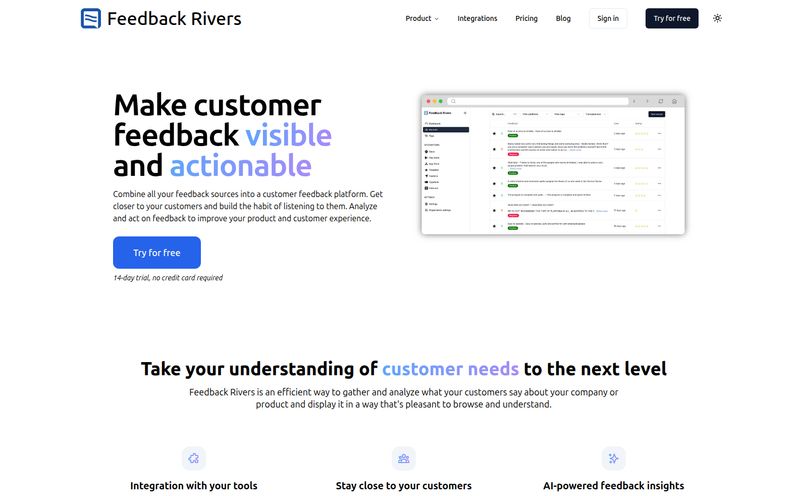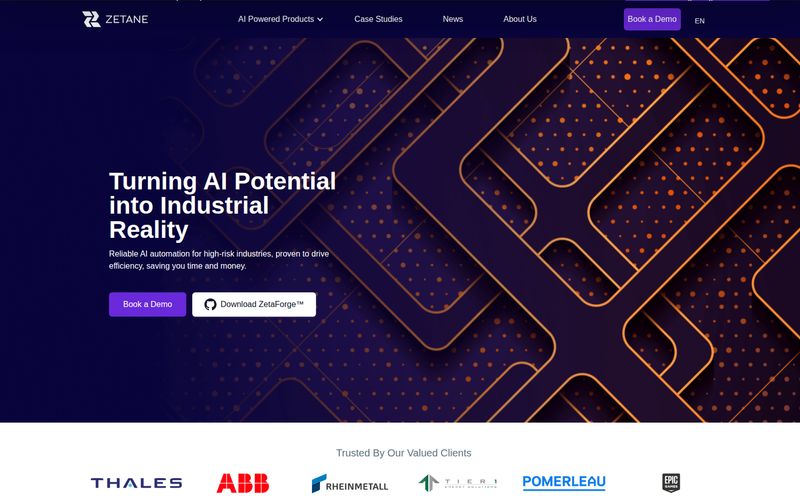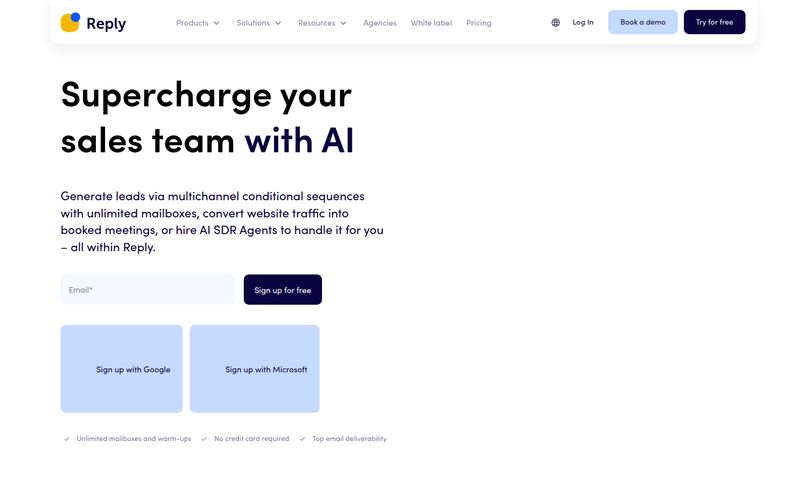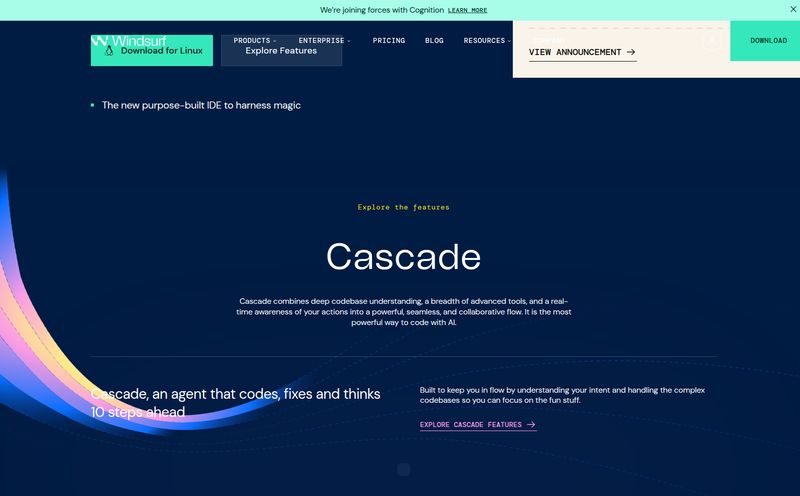I’ve spent more hours than I care to admit wrestling with clunky NFT minting platforms. You know the drill. Uploading files, manually typing in properties, agonizing over metadata fields, and paying gas fees that make your eyes water. It’s a process that feels… well, it feels like it was designed by engineers for other engineers. It's powerful, sure, but friendly? Not so much.
So, when I hear about a platform that claims you can mint an NFT just by pasting a URL, my ears perk up. My inner skeptic immediately raises an eyebrow, but the exhausted SEO guy in me leans in a little closer. That's the promise of LIKN. It’s a new player on the block that’s not just talking about making Web3 easier; it's fundamentally rethinking how we turn anything into a digital asset.
Today, I’m putting on my blogger hat (it's a comfy one, I promise) and taking a good, hard look at LIKN. We'll unpack what it is, how its so-called "Universal Assets Trinity" works, who it’s actually for, and whether it’s just another piece of vaporware or a genuine glimpse into the future of digital ownership. Let's get into it.
So, What Exactly is LIKN? (Beyond the Buzzwords)
Alright, let's cut through the jargon. At its core, LIKN is a bridge. It’s designed to connect the Web2 world we all know and use—the world of blogs, social media posts, news articles, and cat videos—to the burgeoning world of Web3 and the blockchain. Its standout feature, the one that got my attention, is the ability to mint an NFT simply by providing a URL.
Think about that for a second. You write a killer blog post that goes viral. Instead of it just living on your website, you can paste its URL into LIKN and instantly create a verifiable, ownable, and tradable version of it on the blockchain. It's like a universal adapter for the internet of value. Your content is the plug, and the blockchain is the socket; LIKN is the clever bit in the middle that makes them talk to each other.
But it gets cooler. LIKN uses AI to automatically crawl that URL and generate all the necessary metadata for the NFT. This is a huge time-saver. No more manually inputting descriptions, titles, or attributes. The AI does the heavy lifting. Now, is it perfect? We'll get to the potential pitfalls of AI-generated anything later on, but the concept itself is a massive step up in user experience.
The Universal Assets Trinity: NFT + AI Agent + ERC-404
This "Trinity" is what LIKN claims is its secret sauce. It’s not just about creating a static NFT from a link. It’s about creating a dynamic, intelligent asset. It sounds like something out of a sci-fi movie, but let's break it down into its three parts. It's actually quite clever.
The NFT Component
This is the base layer. You mint your content—your URL—as an NFT. But LIKN introduces something called a "Versioning NFT." This is a feature I've been waiting for someone to nail. It means your digital asset isn't frozen in time. It can be updated and evolve. Imagine an artist minting a piece of digital art and then updating it with new layers or animations over time. Or a developer tokenizing a piece of software that gets updated with new versions. This makes the asset a living thing, not just a digital fossil.
The AI Agent's Role
Here’s where it gets wild. Each Universal Asset you create on LIKN can have its own AI Agent. This isn't just an AI that helps with the setup; it's an AI that can manage the asset for you. The platform suggests these agents can perform tasks, execute strategies, and even trade on your behalf to potentially generate passive income. It's like hiring a tiny, hyper-focused robot financial advisor specifically for your single digital asset. The idea is both thrilling and, I've gotta say, a little nerve-wracking. The potential is enormous, but it also opens up a whole can of worms about risk and control.
Why ERC-404 Matters
If you've been in the crypto space for a bit, you've heard of ERC-20 (standard tokens like coins) and ERC-721 (standard non-fungible tokens, or NFTs). ERC-404 is a newer, experimental standard that tries to combine the best of both worlds. It gives an NFT the properties of a regular token. Why is this a big deal? Liquidity. It means your unique, one-of-a-kind NFT can also be fractionalized and traded like a normal cryptocurrency. This could solve one of the biggest problems with high-value NFTs: they're hard to sell because you need one buyer with a lot of capital. With ERC-404, you could sell off small pieces of your asset to many different buyers. It's a fascinating development, and LIKN's bet on this standard shows they're looking ahead. Its a big reason they've partnered with giants like OpenSea.
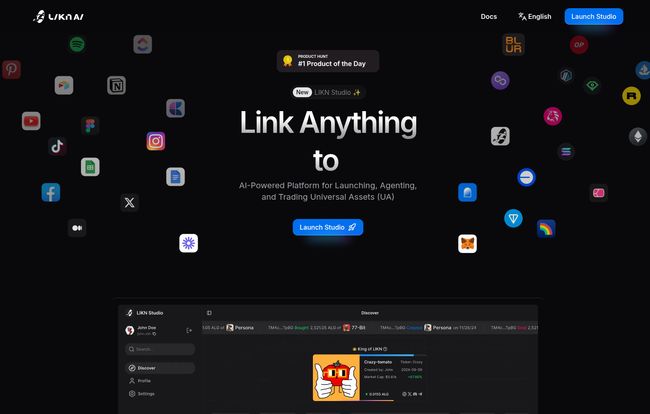
Visit LIKN
The Good, The Bad, and The...Complicated
Okay, let's get down to brass tacks. No platform is perfect, especially one this ambitious. Here’s my honest take on the pros and cons based on what we know so far.
The Good Stuff (My Take)
The simplicity is, without a doubt, the biggest win here. The idea of lowering the barrier to entry for Web3 to just a copy-paste action is brilliant. It opens the door for so many non-technical creators to tokenize their work. The AI-powered automation is a close second. Less time wrestling with metadata fields means more time creating, which is what it should be all about. The potential for passive income via the AI agents and the increased liquidity from ERC-404 are the kinds of forward-thinking features that get me genuinely excited about the space again.
Where I'm Still Hesitant
Okay, but let's not get carried away. The very architecture that makes LIKN powerful also makes it complex. The LIKN-404 standard is not something your average user is going to understand overnight. There's a learning curve here. And my biggest hang-up is the AI. First, there's the issue of bias. If an AI is generating metadata, whose worldview is it using? This is a huge debate in the broader tech world, and it absolutely applies here. Second, and more critically, are the risk protocols for the AI Agents. If I'm going to let an algorithm manage and trade my asset, I need to see a crystal-clear breakdown of the guardrails. What happens if the AI makes a bad trade? What are the limits? This is an area where the LIKN team needs to provide a lot more transparency.
Who Is LIKN Actually For?
Despite its complexities, I can see a few groups of people whose eyes will light up when they hear about LIKN.
- Creators and Artists: This is the most obvious group. Bloggers, musicians, digital artists... anyone putting content online now has a ridiculously easy way to create a verifiable digital original of their work. The versioning feature is particularly juicy for artists whose work evolves.
- Developers and Web3 Builders: For the more technical crowd, LIKN isn't just a tool; it's a set of building blocks. They can integrate the LIKN protocol into their own decentralized applications (dApps) to offer powerful asset creation and management features.
- Brands and Marketers: I can already see marketing teams brainstorming. Imagine a brand turning its latest ad campaign or a popular social media post into a versioned NFT that fans can own a piece of. It’s a whole new avenue for digital collectibles and community engagement.
- Investors and Degens: Let’s be real, the combination of "AI-managed assets" and "ERC-404 liquidity" is pure catnip for the more financially-minded folks in the crypto space. They'll be drawn to the novel financial instruments this platform could create.
Let's Talk Pricing (Or Lack Thereof)
Here's the million-dollar question: how much does it cost? As of right now, there's no public pricing information. The pricing page on their site is empty. This isn't unusual for a project in this early stage. Often, platforms like this will focus on building a user base and getting adoption first, before introducing a monetization model. My guess? We'll probably see a model based on transaction fees, a percentage of AI agent profits, or perhaps a tiered subscription for advanced features. For now, it seems like they want people to just come in and start playing. I’ll be keeping a close eye on their socials for any announcements.
My Final Thoughts: Is LIKN a Glimpse of the Future?
LIKN is ambitious. There's no other word for it. It's trying to solve some of the most annoying and persistent problems in the Web3 space, and it’s doing so with some seriously cutting-edge tech. It feels like one of those projects that will either burn bright and fizzle out or become a quiet, foundational piece of plumbing for the next generation of the internet.
My gut tells me they're onto something important. The user experience in crypto is often its own worst enemy, and LIKN attacks that problem head-on. The "URL to NFT" is the simple, brilliant hook, but the underlying engine of AI-managed, versionable, and liquid "Universal Assets" is the real story. I'm cautiously optimistic. I’m not ready to let its AI agents manage my life savings just yet, but I've bookmarked LIKN and put it squarely on my "watch very closely" list for 2024.
Frequently Asked Questions about LIKN
- What is LIKN in simple terms?
- LIKN is a tool that lets you turn any web content (like a blog post or a picture) into an NFT just by pasting its URL. It uses AI to handle the complicated setup and can even manage the asset for you.
- How does the AI agent manage my assets?
- The specifics are still a bit vague, but the idea is that you can deploy an AI Agent that operates based on predefined rules or strategies. It could potentially trade the asset on marketplaces or perform other actions to optimize its value, all without your direct intervention.
- Is LIKN safe to use?
- Like any new Web3 platform, there are inherent risks. While the underlying blockchain technology is generally secure, the safety of the AI agents and their trading protocols is a major question. The LIKN team needs to provide more clarity on their risk management and security measures before users should invest significant capital.
- What is ERC-404 and why is it important for LIKN?
- ERC-404 is a new, hybrid token standard that combines NFT uniqueness with the tradability of regular tokens. It's important because it allows a single, unique asset on LIKN to be fractionally owned and traded easily, which increases liquidity and accessibility.
- Can I mint any URL as an NFT with LIKN?
- In theory, yes. The platform is designed to connect any Web2 content to Web3 via its URL. This could include articles, social media posts, images, videos, and more. The exact limitations, if any, will become clearer as the platform develops.
- How much does LIKN cost?
- Currently, there is no public pricing for LIKN. The project is likely in an early adoption phase, and pricing details are expected to be released at a later date.
Wrapping It Up
The road from Web2 to a fully realized Web3 is going to be a long and messy one. It will be paved by tools that prioritize simplicity and solve real problems for real people. LIKN is, at the very least, a serious attempt to be one of those pavers. By making asset creation as easy as sharing a link, they’ve thrown down a gauntlet. It's an exciting project with a ton of potential, and I for one will be watching to see if they can deliver on their very big promises.
Reference and Sources
- LIKN Official Website
- OpenSea Marketplace
- An Explainer on the ERC-404 Standard from CoinDesk
- A Primer on AI Bias from WIRED
